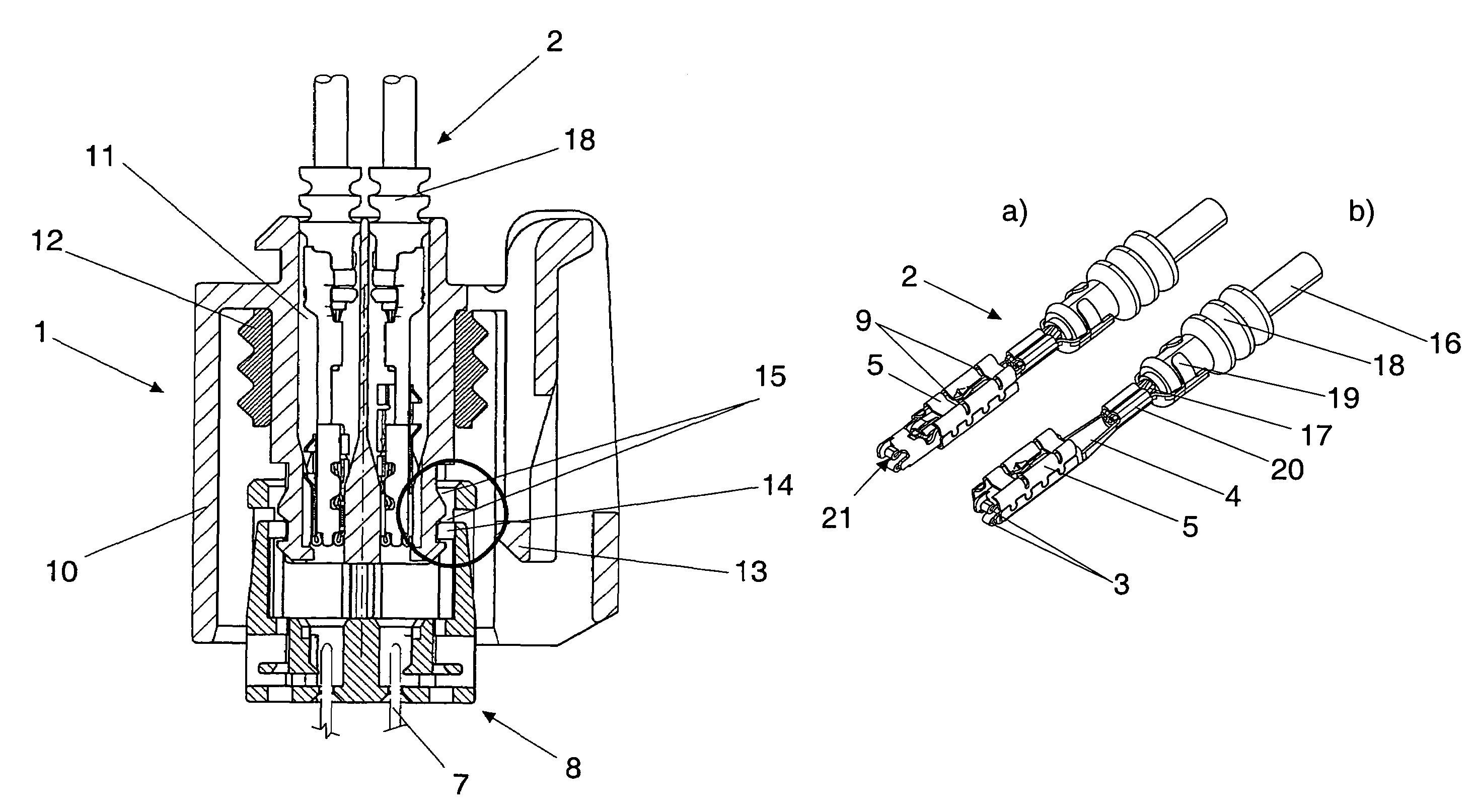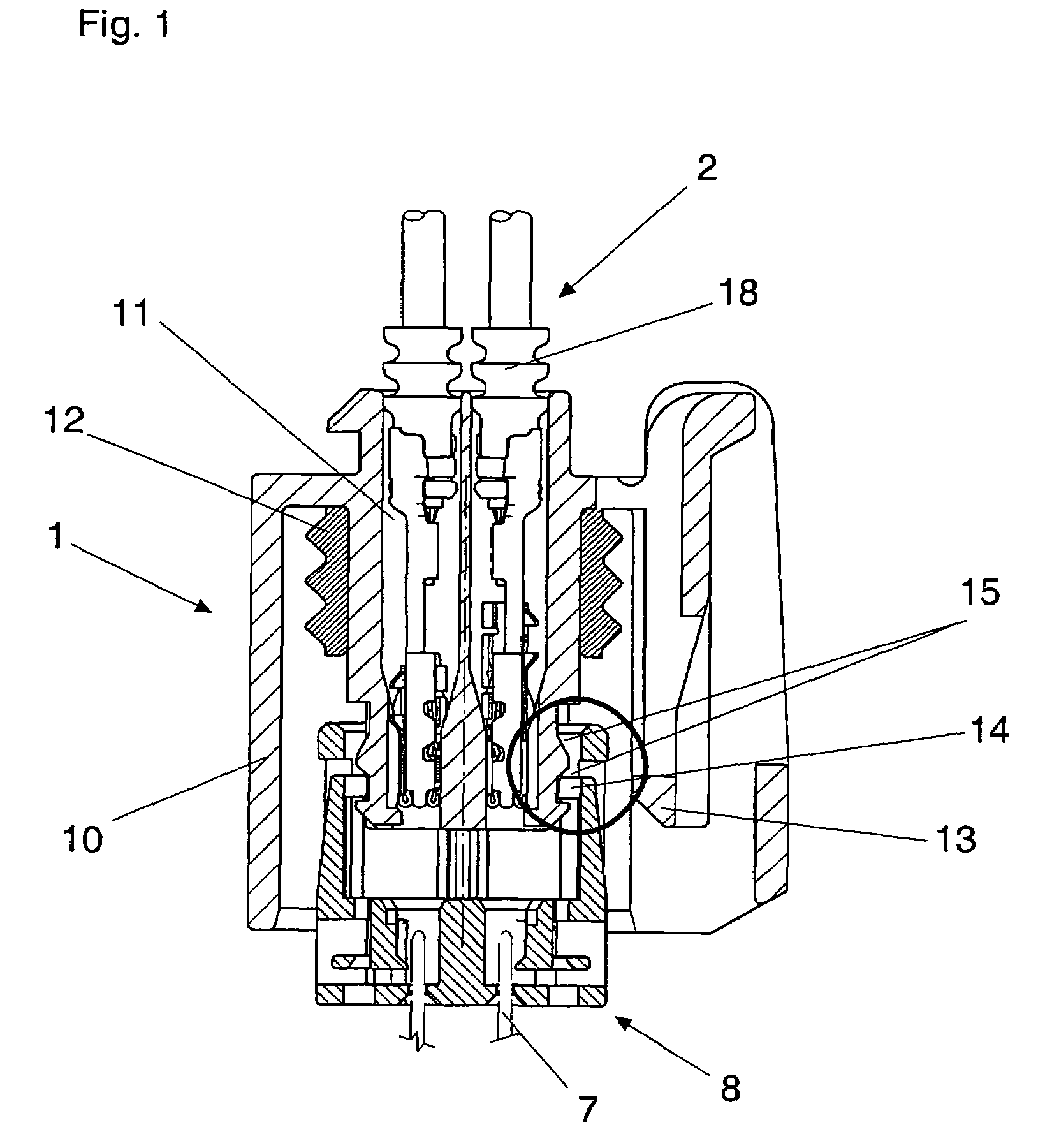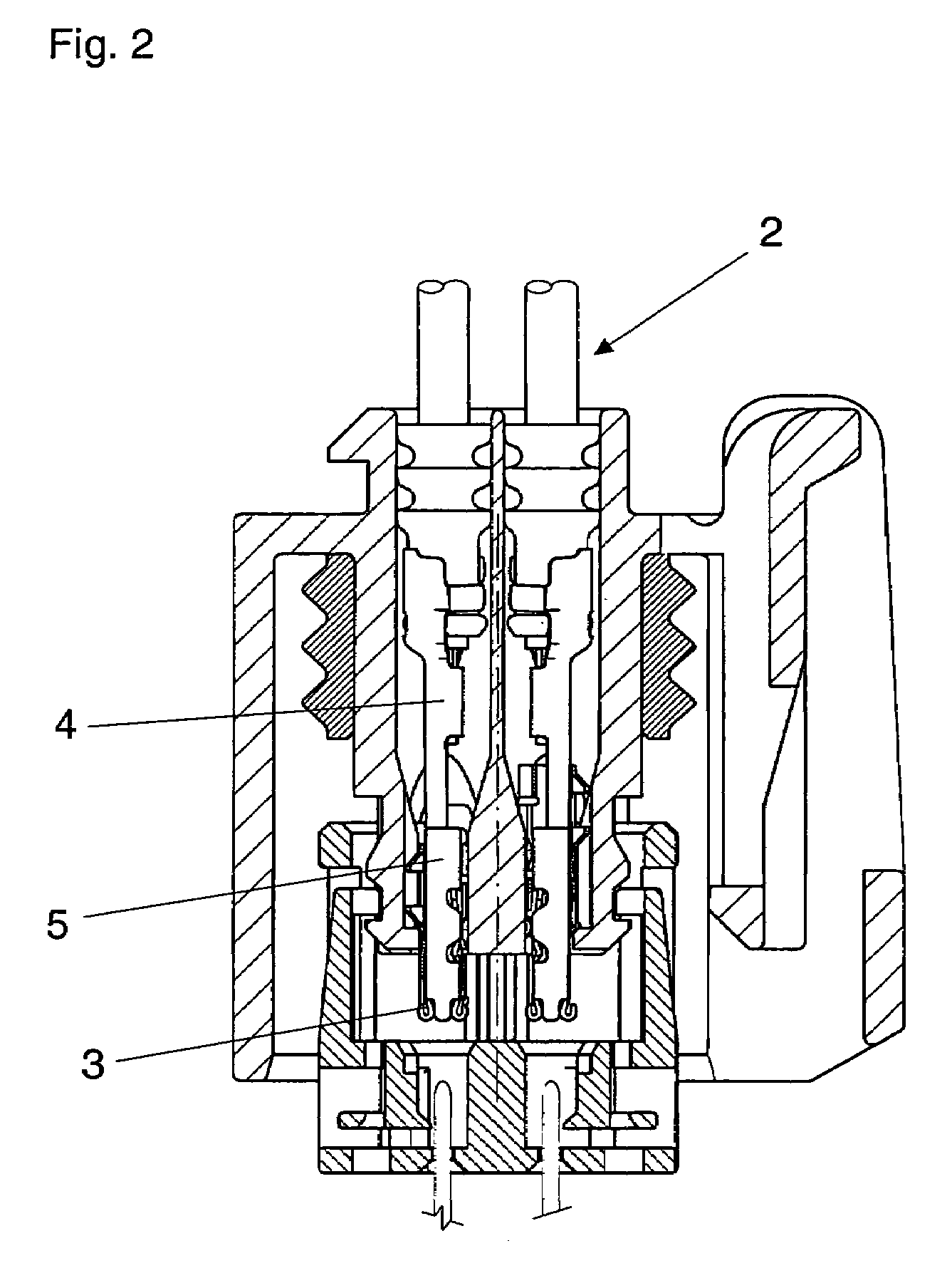Electrical zero insertion force connector
a zero-inserting force, connector technology, applied in the direction of coupling contact member, electrical apparatus, coupling/disengagement parts, etc., can solve the problems of high assembly cost, high assembly cost, and high electrically connecting parts
- Summary
- Abstract
- Description
- Claims
- Application Information
AI Technical Summary
Benefits of technology
Problems solved by technology
Method used
Image
Examples
Embodiment Construction
)
[0024]FIGS. 1, 2, and 3 illustrate respective sectional views of a first plug-and-socket connector part of an electrical zero force insertion connector in various joined stages. FIG. 4 illustrates a sectional view of the first connector part and a second connector part 6 mechanically and electrically interconnected to form the electrical zero force insertion connector.
[0025]The first connector part includes a first housing 1 and a second housing 8. First housing 1 and second housing 8 are independent housing parts which connect together to form the first connector part. Second housing 8 assumes either a pre-locked position or a final locked position relative to first housing 1 when the first and second housings are connected. That is, second housing 8 is movably connected to first housing 1 between the pre-locked position and the final locked position. FIGS. 1, 2, and 3 illustrate second housing 8 in the pre-locked position. FIG. 4 illustrates second housing 8 in the final locked p...
PUM
 Login to View More
Login to View More Abstract
Description
Claims
Application Information
 Login to View More
Login to View More - R&D
- Intellectual Property
- Life Sciences
- Materials
- Tech Scout
- Unparalleled Data Quality
- Higher Quality Content
- 60% Fewer Hallucinations
Browse by: Latest US Patents, China's latest patents, Technical Efficacy Thesaurus, Application Domain, Technology Topic, Popular Technical Reports.
© 2025 PatSnap. All rights reserved.Legal|Privacy policy|Modern Slavery Act Transparency Statement|Sitemap|About US| Contact US: help@patsnap.com



